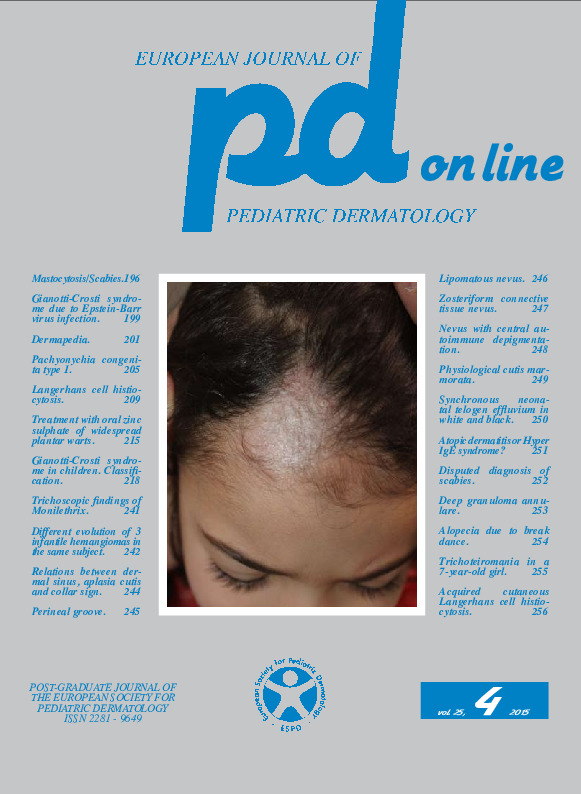Gianotti-Crosti syndrome in children. Atypical variants and classification.
Downloads
DOI:
https://doi.org/10.26326/2281-9649.25.4.1164How to Cite
Chuh A., Zawar V. 2015. Gianotti-Crosti syndrome in children. Atypical variants and classification. Eur. J. Pediat. Dermatol. 25 (4):218-25. 10.26326/2281-9649.25.4.1164.
pp. 218-225
Abstract
There exist numerous variants for Gianotti-Crosti syndrome (GCS). A validated diagnostic criterion exists, but not a system of classification. With the adoption of a set of classification, clinicians can readily assess a child with GCS in different axes, thereby facilitating the choice of intervention. A classification also allows for effective communication with colleagues, and would enable subgroup analyses in clinical studies. Our aim is to propose a classification system for GCS in children (below 16). We searched the medical literature in the previous 20 years, and retrieved clinical records of children diagnosed with GCS. We analysed the clinical manifestations according to five axes. We found 33 journal articles and clinical records of 44 children with GCS. We presented our findings for typical and atypical rashes and formulated a set of classification of GCS. In conclusion, it is feasible to establish a systematic multi-axial classification for GCS in children.Keywords
Diagnostic criteria, Epstein-Barr virus, Hepatitis B virus, Papular acrodermatitis of childhood, Subgroup analysis

